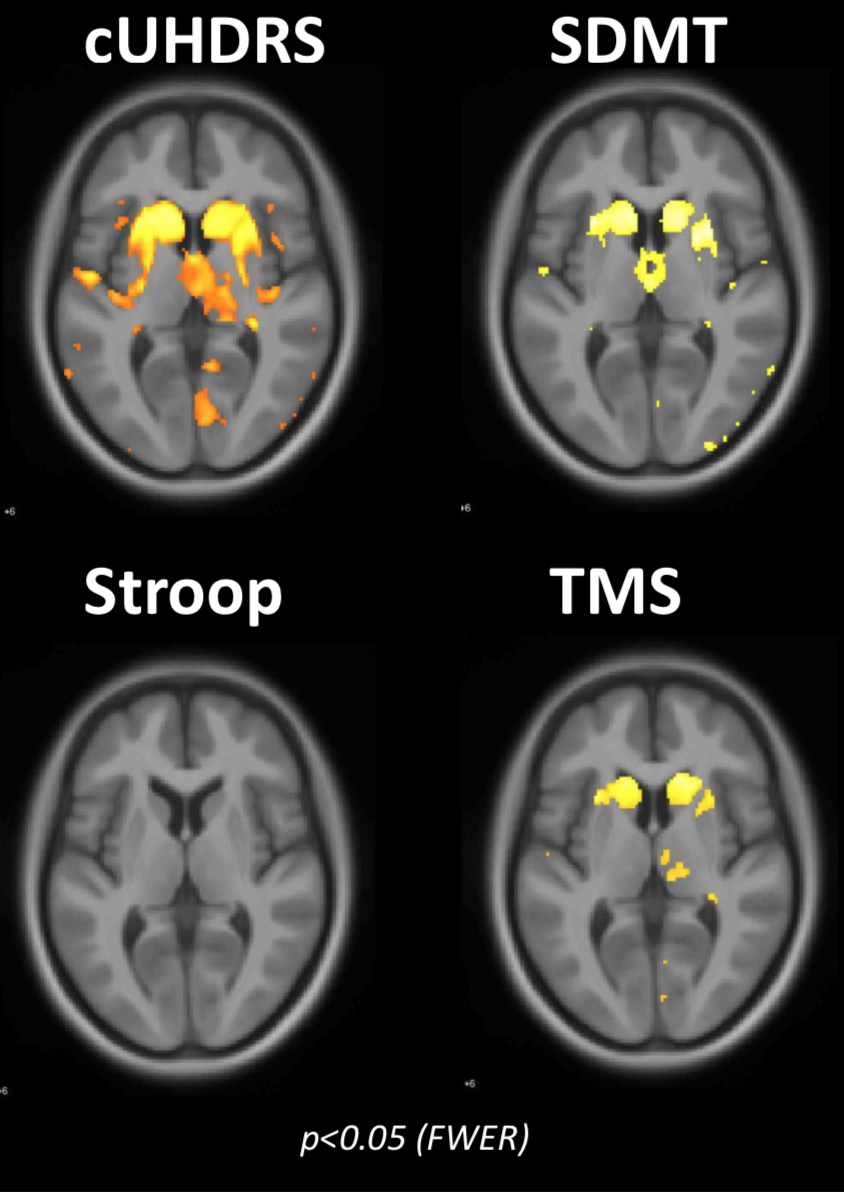Session Information
Date: Wednesday, September 25, 2019
Session Title: Neuroimaging
Session Time: 1:15pm-2:45pm
Location: Les Muses Terrace, Level 3
Objective: This work sought to determine the structural correlates of variability in cUHDRS in HD gene expansion carriers (HDGC).
Background: Symbol digit modalities test (SDMT), Stroop word-reading test and Total Motor Score (TMS) are the most reliable clinical measures in Huntington’s disease (HD). Recently a composite measure of motor, cognitive and functional outcome (cUHDRS) has been proposed as a sensitive clinical tool in early HD (1).
Method: Participants were recruited from the TRACK-HD study which included 120 premanifest (preHD) and 123 early HD patients. Clinical assessments were performed at four sites. 3T MRI data were acquired according to a standardized protocol. Nine participants were excluded from the analysis due to poor quality scan or incomplete clinical assessments leaving a total of 234 HDGCs (118 preHD and 116 early HD). Correlation analysis was performed using voxel-based morphometry (VBM) in SPM12. We studied the correlation between SDMT, Stroop, TMS and cUHDRS scores with grey matter (GM) and white matter (WM) volumes at baseline. Results were considered significant at cluster-level p<0.05 (FWE-corrected).
Results: Clinical impairment in HDGC was correlated with GM volume in caudate and putamen as well as with surrounding WM volume. This correlation between cUHDRS and both GM (image 1) and WM volumes was spatially extensive and statistically significant.
Conclusion: In HDGCs, cUHDRS shows a significant correlation with GM and WM volumes in a fashion that extends throughout the basal ganglia and surrounding WM, suggesting this composite clinical measure links closely with underlying HD pathology.
References: 1. Schobel SA, Palermo G, Auinger P, Long JD, Ma S, Khwaja OS, et al. Motor, cognitive, and functional declines contribute to a single progressive factor in early HD. Neurology. 2017;89(24):2495–502.
To cite this abstract in AMA style:
C. Estevez-Fraga, E. Johnson, F. Rodrigues, P. Zeun, A. Durr, D. Langbehn, B. Leavitt, R. Roos, S. Gregory, R. Scahill, G. Rees, S. Tabrizi. Composite UHDRS shows extensive spatial correlation with grey matter and white matter volume in Huntington’s disease gene carriers [abstract]. Mov Disord. 2019; 34 (suppl 2). https://www.mdsabstracts.org/abstract/composite-uhdrs-shows-extensive-spatial-correlation-with-grey-matter-and-white-matter-volume-in-huntingtons-disease-gene-carriers/. Accessed April 2, 2025.« Back to 2019 International Congress
MDS Abstracts - https://www.mdsabstracts.org/abstract/composite-uhdrs-shows-extensive-spatial-correlation-with-grey-matter-and-white-matter-volume-in-huntingtons-disease-gene-carriers/

